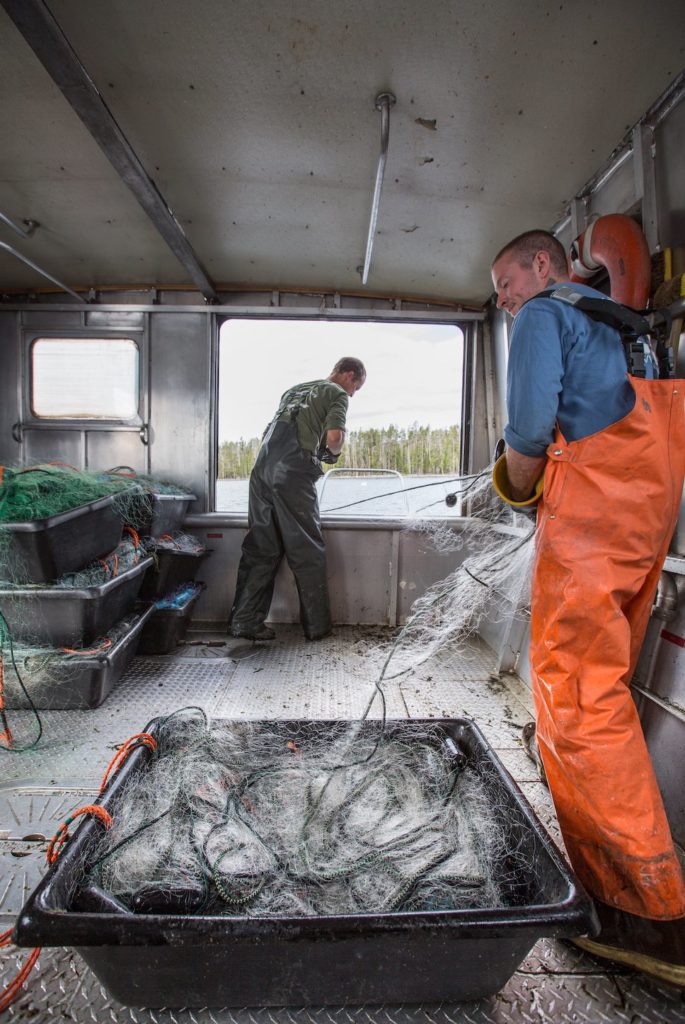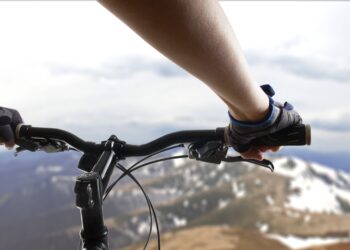By Brandon Walker EBS STAFF
YELLOWSTONE NATIONAL PARK – Even a global pandemic couldn’t derail a battle that has raged for 25 years underwater within Yellowstone National Park. Since 1995 National Park Service crews and contracted commercial fishing boats have harvested more than 3.35 million non-native lake trout from Yellowstone Lake through gillnetting efforts in an attempt to eradicate the invasive species that threaten the native cutthroat trout.
Since the first lake trout appeared in Yellowstone Lake, caught by an angler in July of 1994, extensive NPS efforts have slowly decreased their numbers within the lake, but according to head of the Native Fish Conservation Program Dr. Todd Koel, the fight is far from over.
Lake trout thrive in Yellowstone Lake mainly because they have no natural predators. “They have great survival [rates] because there is nothing coming along to eat them,” Koel said. “…They’ve got all these advantages that we’re trying to change.”
To date, over $20 million has been spent trying to eliminate the lake trout and restore the cutthroat trout in Yellowstone Lake, according to a Yellowstone National Park press release. Funding for all aspects of the program comes from NPS, Yellowstone’s nonprofit partner Yellowstone Forever and Wyoming Trout Unlimited among others, according to Koel.
Koel has been involved with the project for 20 seasons. He said that COVID-19 has presented challenges in the form of limited staffing, as all NPS employees are living individually this season—in some instances a single employee is occupying a residence that would normally host eight—but it hasn’t caused a large disruption to the lake trout suppression efforts.
“I’m not going to say it didn’t have any impact at all,” he said. “But in terms of lake trout suppression and cutthroat recovery on Yellowstone Lake, we’re pretty much considering we’re going full bore.”
Typically, six gillnetting boats are in operation during the gillnetting season spanning months throughout the spring, summer and fall, on Yellowstone Lake harvesting the non-native, predatory lake trout. However, this year there is only enough staff for five.

NPS usually staffs two of the six boats, with the other four operated by Wisconsin commercial fishing contractor Hickey Brothers Research—who have been contracted to assist the program since 2009—but due to the reduction in employees NPS can only field a crew to operate one vessel. Koel isn’t concerned there’s one less boat on the water, as harvest numbers in recent years have been trending down as the population is reduced.
“If the catch rates continue to go down like they have been each year then the nets are [easier] to process and you can set and retrieve more,” he said.
As of June 21, 91,300 lake trout have been netted in 2020. Koel said it appears the total catch will continue to trend down as it has been in years past. Once netted, lake trout are culled and sunk into the depths of Yellowstone Lake to decompose.
“It keeps the nutrients of the lake trout in the lake. To what extent it effects the ecology of the lake, that’s what we’re actually investigating right now with our students,” Koel said.
Koel said NPS considered attempting to sell the harvested fish, but because of the duration that the gillnets are deployed many of the fish cannot be consumed and the act of processing the ones that could be would occupy lengthy periods of time—Koel noted that Hickey Brothers Research said that processing fish could take up to 50 percent of their contracted time.

“That would mean we would have to double the fleet and the crews to kill as many lake trout,” he said.
Aiding the smaller fleet, which will be forced to conclude their gillnetting efforts in October by ice, are new scientific tactics in the form of a pellet that is strategically placed at lake trout spawning sites. The soy and wheat gluten pellets, similar in size to that of lake trout eggs, were developed to remove dissolved oxygen from the water, killing the eggs in the process. Koel said no ecological repercussions from the pellets have been observed to this point.
“We’ve tried it at different, I guess you’d say biomass densities, or different amounts of the pellets to try to find this sweet spot that we can apply the minimal amount and still kill all of the eggs and we’ve done that and it’s working so good,” he said.
NPS utilized a helicopter this past year to spread the pellets over spawn locations. At the Carrington Island spawning site, one of 14 NPS identified lake trout spawning sites within Yellowstone Lake, Koel said the pellets effectively killed all of the eggs. Koel also noted that NPS plans to move ahead with another treatment of the soy and wheat gluten pellets this fall during the lake trout spawning season, roughly mid-September to mid-October.
The pellets are the latest attempt by NPS to eliminate lake trout spawns. Prior to the pellets, part of the lake trout spawning elimination strategy was to introduce decaying lake trout carcasses. The decomposing carcasses have the same effect as the pellets: removing dissolved oxygen from the water.
“In the end the lake trout suppression project, and the cutthroat trout recovery as a result of that, in Yellowstone Lake, is first and foremost the top priority,” Koel said in reference to how funds are allocated for various NPS projects. “…Anything else we do outside of Yellowstone Lake, comes after that.”
While he admits that cutthroat trout numbers haven’t yet reached satisfactory levels established by NPS, he is encouraged by the health of fish that he has seen.
“A cutthroat trout that’s 20 inches long now weighs twice as much as it did prior to the lake trout invasion and the impact of lake trout. So, the fish that are surviving out there are doing better,” he said.














